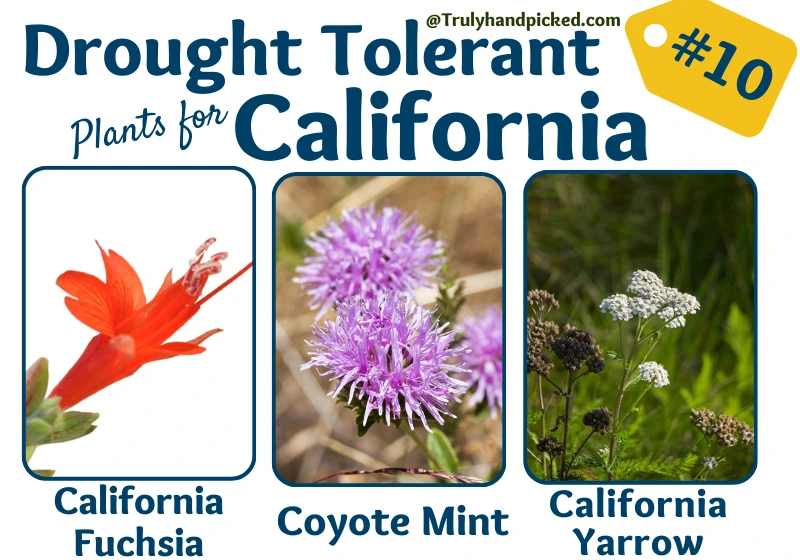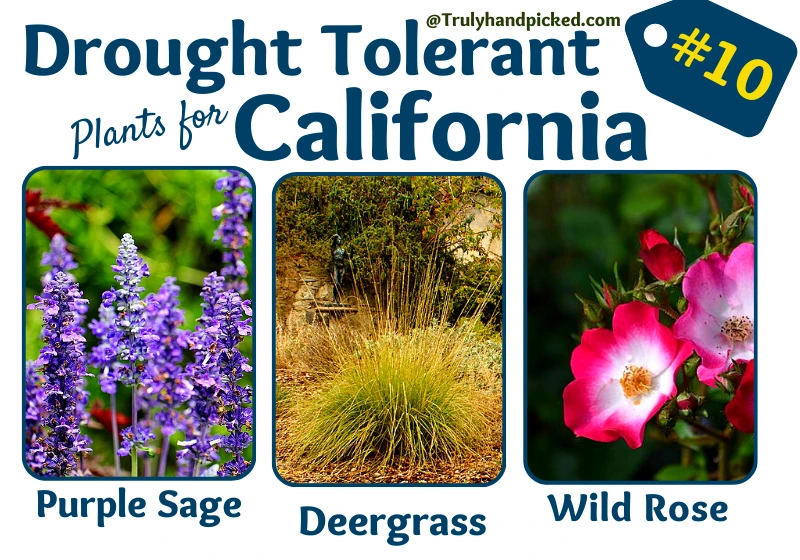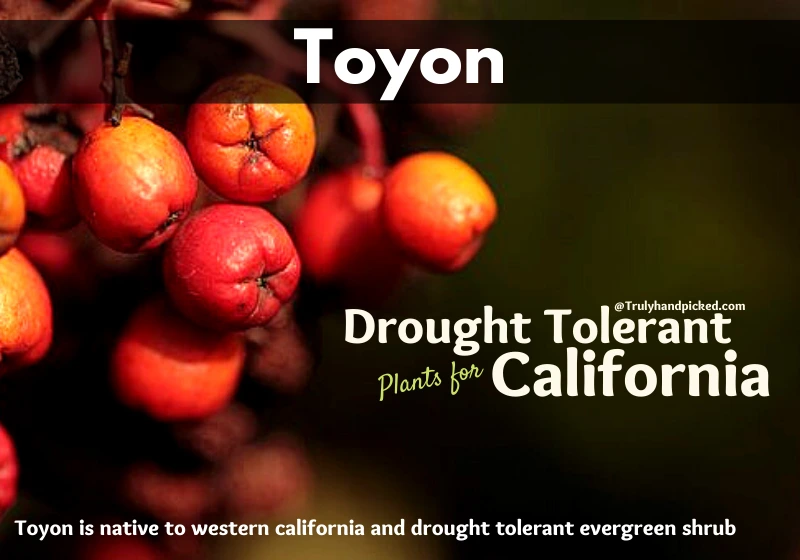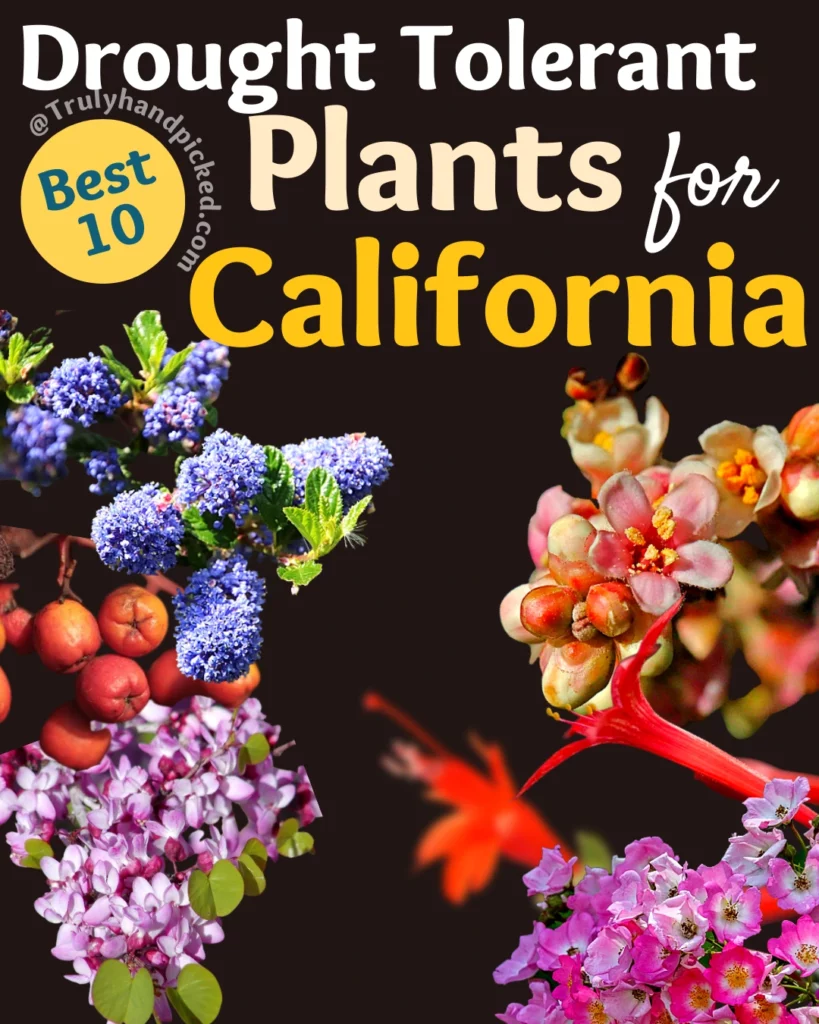The climate in California is quite dry and thus, most of the native plants are drought-tolerant. If you live in a place with extreme heat and dry air, pick these California plants without any worry.
You don’t need to spend any additional effort to get their thriving form. The best part of California plants is that the utmost species of them thrive quickly with the least attention.
Besides, they even reward you with some exotic blossoms at their peak seasons! So, here we come up with the best drought-tolerant California plants which can adorn your yard in a mesmerizing way-
Plants That Are Native to California and Drought Tolerant
California Fuchsia:
Description:
Epilobium canum is a perennial flowering subshrub that produces trumpet-shaped scarlet flowers around greyish-green foliage. It can grow up to 1-2 feet tall with a 2-3 ft. spread. Flower tints can vary depending on the selective species.
- Sun Exposure: Sun with partial shade
- Soil Need: You need to provide it organically rich, moist, and well-drained type soil
- Water Needs: You should water this drought-tolerant plant rarely, like once every 10 days with ½-inch deep watering
- USDA Zone: 8 to 11
- Blooming Period: Late summer and autumn
Related: Best drought-tolerant plants for your garden

Coyote Mint:
Description:
Monardella villosa aka coyote mint is another California subshrub that can tolerate stress expertly and thrive easily. Its unique-looking round, thready, fragrant lavender-color flowers seem super catchy when blooming entirely. It can grow up to 12-18 inches tall with an equal spread.
- Sun Exposure: Full sun to sun with partial shade
- Soil Need: You should give it well-draining normal soil with an alkaline pH level to get its healthiest form
- Water Needs: Due to being drought-tolerant, your coyote mint doesn’t need much watering. You can water it once every 10-12 days only during the summer days
- USDA Zone: 6 to 9
- Blooming Period: June through August
Related: How often to water your succulents
California Yarrow:
Description:
California yarrow is another good choice to grow in your garden for an exclusive view with a nice fragrance. It grows cream-colored flower clusters around feathery fern-like leaves. Plants can grow up to 36 inches tall at their heist peak.
- Sun Exposure: Full sun
- Soil Need: It prefers loamy, sandy well-drained soil with neutral pH balanced
- Water Needs: It needs moderate watering like ½ inch per week
- USDA Zone: 3 to 9
- Blooming Period: Summer and Fall
Related: How to water your plants while you are away

Purple Sage:
Description:
Purple sage is one more popular California plant that produces highly attractive blossoms in purple tint. This evergreen perennial shrub can grow up to 8 inches tall with an equal amount of widespread.
- Sun Exposure: Full sun
- Soil Need: Sow your plant in well-drained poor soil with a slightly acidic to the slightly alkaline pH level
- Water Needs Water your growing plant a small amount about ½ inch per week till it establishes. Then, you don’t need to water your plant at all
- USDA Zone: 6 to 10
- Blooming Period: Spring to summer
Deergrass:
Description:
If you have a wide outdoor area and looking for an evergreen grass option, deergrass can be the best pick for you. It is a perennial bunchgrass that grows spike grass leaves that are 3-4 feet in length with ½ inch spread.
- Sun Exposure: Full sun
- Soil Need: You need to plant this quick-grower shrub in moderately rich well-drained soil
- Water Needs: Water your plant with a deep occasional watering schedule apart from the rainy season
- USDA Zone: 6 to 11
- Blooming Period: Late summer and early spring
California Wild Rose:
Description:
California wild roses are no less beautiful than normal roses. This drought-tolerant plant produces soft pink flowers with papery petals and a bright yellowish pistil part over woody stems and around green foliage.
- Sun Exposure: Sun with partial shade
- Soil Need: Give your plant loamy, moist, rich, well-drained soil with alkaline pH
- Water Needs: Water your plants about three times per month with deep watering
- USDA Zone: 6 to 9
- Blooming Period: Spring through summer

California Redbud (Western):
Description:
Western redbud is a perennial shrub native to northern California and sometimes can grow as a tree too, besides a bush. California redbud produces flowers in stalks over woody stems in a vibrant pink tint. It can grow up to 30 feet tall while cultivated as a tree.
- Sun Exposure: Full sun to sun with partial shade
- Soil Need: Offer your plant moderately fertile, well-drained soil with a slightly alkaline pH level
- Water Needs: Comparing other drought-tolerant plants, this plant needs a bit more watering about 2-3 inches of deep watering per week. You can reduce the watering once the plant is established well
- USDA Zone: 4 to 8
- Blooming Period: spring
Related: Best wind-resistant plants for your garden
Lemonade Berry:
Description:
Lemonade berry is another great option to pick as a pretty drought-tolerant species that is native to California. This plant also thrives as both shrub and tree relying on the cultivation process. It produces tiny flower clusters around leathery foliage. its edible red fruits attract many pollinators to our yard.
- Sun Exposure: Full sun to sun with partial shade
- Soil Need: You need to give this plant organically rich, sandy soil with well-drained quality and a neutral pH level
- Water Needs: You don’t need to water your plant much. Make it slightly drenched with ½ -inch of deep watering per week but that is during summer days only
- USDA Zone: 9 to 11
- Blooming Period: February to May
California Lilac:
Description:
California lilac is a great flowering plant with drought-tolerant quality. It produces flower clusters in some bright tints like blue, pink, and even elegant white sometimes. This evergreen deciduous shrub can thrive up to 2 to 20 feet tall, relying on its selective species.
- Sun Exposure: Full sun to sun with partial shade
- Soil Need: Use moist, well-drained soil to sow your California lilac, and make sure the pH level stays neutral to get the best thriving form of it
- How Often to Water: Water your growing plant regularly at the beginning of the plantation. Then you can reduce the watering to 1-inch deep watering only twice a month
- USDA Zone: 8 to 10
- Blooming Period: Late spring to early summer or sometimes, July through August

Toyon:
Description:
Toyon can be a great and colorful addition to any landscape. This plant is more toted for its berry-like edible crops rather than foliage or flowers. This perennial woody shrub or tree produces clusters of flowers in tiny five-petal shapes and bright white shade, around emerald green sleek foliage. A fully mature plant can grow up to 8 feet tall.
- Sun Exposure: Full sun to sun with partial shade
- Soil Need: Give your plant moist, averagely fertile, clay-base serpentine soil that can drain very well. keep the pH level
- Water Needs: Give your plant consistent watering at the beginning as in 1-inch deep and thorough watering for the first few weeks of the plantation. Then you can reduce it to about once every other week
- USDA Zone: 9 to 11
- Blooming Period: Spring to summer
